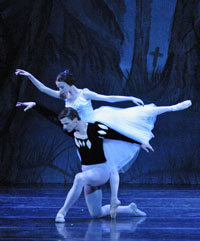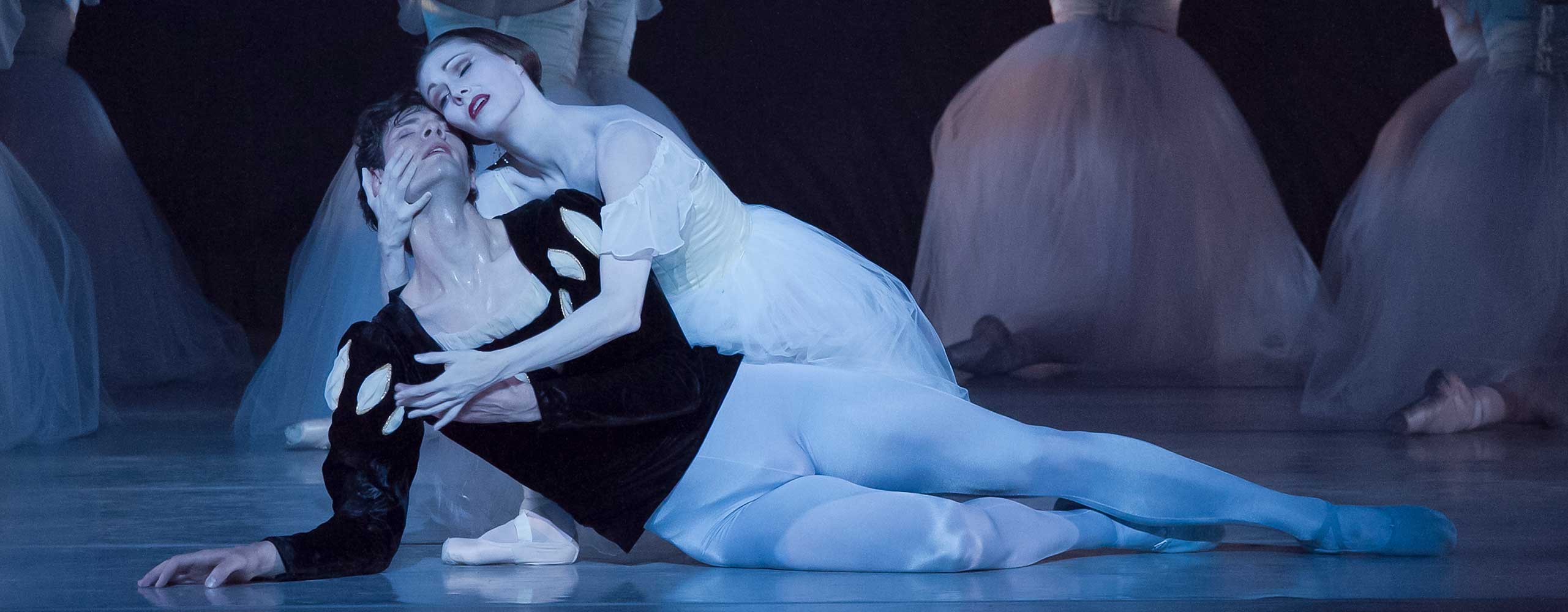
Choreography: Jean Coralli & Jules Perrot
Music: Adolphe Adam
Giselle was first performed in London in 1841 with Carlotta Grisi and Lucien Petipa in the leading roles. The idea for the ballet came from Theophile Gautier, a poet and theatre critic, who wrote the scenario with the help of Jules-Henri Vernoy de Saint-Georges, an opera librettist. Giselle is an original story based on Heinrich Heine’s tale of the Wilis, the spirits of young girls who were jilted before their wedding day and now seek revenge upon men by dancing them to death. The Romantic literary piece, Fantomes, by Victor Hugo, also influenced Gautier’s story of Giselle.
Act One takes place during the grape harvest celebration in a village along the Rhine River where several peasant couples gather for festivities. Giselle, one of the peasant girls in the village, lives in a cottage with her mother, Berthe. Hilarion, a gamekeeper, is in love with Giselle, but she doesn’t return his affection. Count Albrecht, too, is in love with Giselle and since it is not acceptable for one of royalty to be romantically involved with a peasant, he has put on a peasant disguise in order that she might love him back.
Giselle’s mother sees the dancing and celebration and reminds her daughter that too much dancing is dangerous for her weak heart. Berthe seems to have a premonition of her daughter as a Wili.
A hunting party arrives, led by Prince of Courtland and his daughter, Bathilde, who is engaged to Albrecht. (Giselle and Bathilde are not aware of each other’s relationship with Albrecht.) After Bathilde asks Giselle what things she likes to do best, the young girl replies, “I like best to dance” and then shows several steps. Bathilde admires Giselle and gives her the necklace that she is wearing.
Once again, Giselle and her peasant friends resume their dancing. During this harvest celebration Hilarion reveals to everyone Albrecht’s true identity and his relationship with Bathilde. Giselle tears off the necklace that Bathilde gave her and throws it to the ground. The poor girl is so stricken with grief that she loses her mind and then dies of a weak and broken heart.
Act Two takes place in a forest glade at midnight near Giselle’s grave. The vengeful Wilis, led by their queen, Myrtha, appear and Giselle joins them in their endless dancing. Albrecht approaches the grave as the Wilis disappear and Giselle tries to comfort her grieving lover. Hilarion soon appears and is caught in the spirits’ spell and is forced to dance to his death. Giselle protects Albrecht from a similar fate with her love and forgiveness. Dawn is breaking and the Wilis must vanish back to their graves. Giselle and Albrecht embrace, knowing that their love will live eternally. Albrecht follows Giselle to her grave where she disappears.
Ballet Premiere: June 28, 1841, Salle Le Peletier, Paris France.
Kansas City Ballet Premiere: April 22, 1999, Lyric Theatre
